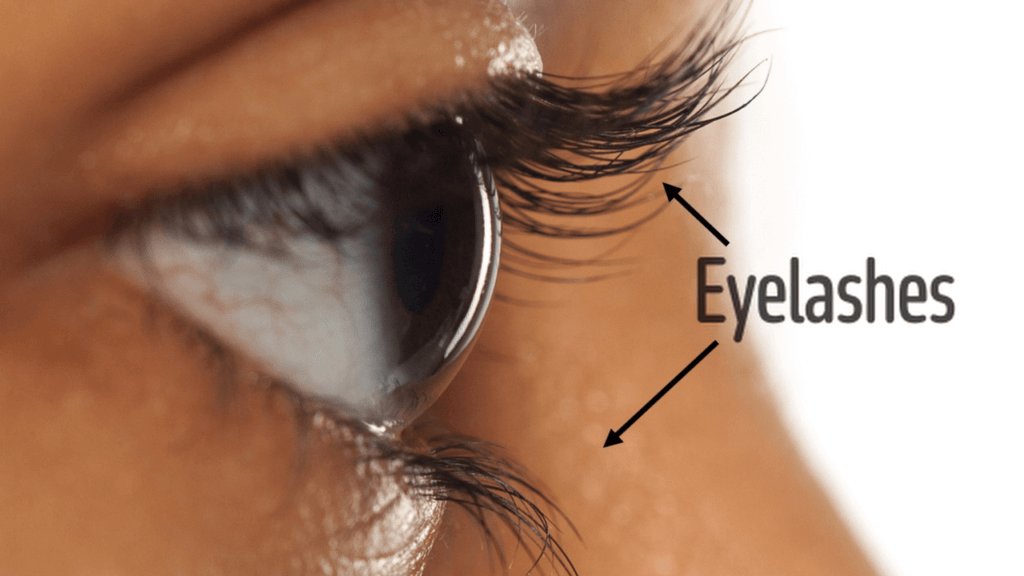What Role Do Eyelashes Play in Vision?
Eyelashes serve the purpose of protecting the eye from irritation from the surrounding world. It is pretty amazing how well they perform when you consider how many fine particles and debris tend to float through the air. Lashes act both like screens to stop external material from entering the eye and as “feelers” (like animal whiskers) to protect the eye from potential irritants and looming danger.

Eyelashes’ Impact on Vision
For the most part, eyelashes do not have a direct role in visual sensory. Though some like to think of eyelashes like the brim of a baseball cap that we use to block sunlight, the design of our lashes is not intended for this action.
Eyelashes curl away from our line of sight, so as not to disturb our vision or visual fields. At times, however, lashes that do not properly curl away from our line of sight may protrude into our line of sight, but due to the size of them and physics of light, these rogue lashes are usually not visually perceived due to their thin nature.
Eyelashes do play an apparent role in the psychology of human attraction and self-image. Thousands of years of cosmetic enhancements to the lids and lashes demonstrate the obvious attractive properties of the human eye. Today, billions and billions of dollars are spent on cosmetics, and lash adornment plays a significant role in the industry.
Eyelashes and Contact Lenses
Lashes also play a role in contact lens use. Think of it this way… all of our lives our lashes have played the protective role of keeping foreign bodies out, and have performed the task wonderfully (hopefully). When we start wearing contact lenses, we try to bypass this natural defense mechanism of our lashes. Therefore, first time wearers tend to have difficulty inserting a contact lens due to the lids and eyelashes reflex to “keep foreign objects out”.
In response, inserting a contact lens often involves “pinning” the upper lid open by pressing the upper lashes against the upper brow bone. The lids do not stretch like the skin, so limiting the blink reflex can assist in inserting contact lenses as well as taking contacts out. However, it is often better to learn to suppress the blink reflex, then to manipulate the lids due to the drying effect of forcing the lid open during contact lens manipulation. It’s not easy to STOP blinking when you insert a contact lens, but, with practice, it can be done.
With proper inserting and removing techniques, even the longest lashes should not interfere with contact lens wear. However, extensions and their adhesives may be disruptive if lash manipulation is necessary for contact use. Again, another good reason to suppress the blink reflex with contact lens use instead of trying to pin them down.
Common Eyelash-Related Issues
There are about 100-150 lashes per lid with an average length of 6 millimeters and life cycle of about 4 months. Here are conditions that can affect the eyelashes:
Ectropion
Outward turned lid and lashes that usually allow for excessive drying of the tears causes the eye to become dry due to an ineffective seal if the lower lid margin
Entropion
Inward turned lid and, therefore, lashes that causes a direct irritation of the eye from the lashes
Trichiasis
A normal lid with misdirected lashes that irritate the eye due to the direction of growth
Distichiasis
Anomalous growth of a “second” row of lashes situated behind the normal lash line, usually arising from trauma or lid irritations
Madarosis
Abnormal loss of lashes (when noticed with a lid growth, lid cancer needs to be ruled out)
Demodex
Acommon (and even more common in contact lens wearers) human lid and lash parasite that can reside at the root of eyelashes. When in excess, they cause blepharitis (inflammation of the lids) and meibomian gland dysfunction (reduce oil gland production that leads to “dry eye”) and lead to contact lens intolerance
Eye Health Tips Specific to Eyelashes
Given the fact that lashes can become infested with demodex, which are normally benign to our lash root, it is important to maintain good hygiene of our lids and lashes. Here are some ideas that may help:
- Practice good lid hygiene with mild cleaners that are approved for lid care
- Hot compresses increase blood flow to the lid which will both improve lash health, and assist in cleaning debris from the lashes
- Wearing cosmetics carefully:
- Never wear eyeliner beyond the lash line
- Wear mascara only on the outer half of the lashes (this allows the base of the lash to breathe and prevents access “clumping” of the lashes from sticky mascara, leading to not only increased health, but improved cosmetics)
- Any sign of cosmetics (including false lashes) being irritating to the lids should be discontinued immediately
- If using glue for false lashes, it is suggested to NOT use glues that contain formaldehyde due to their common sensitivity issues (it’s also a good idea to test any lash glue you may use on your wrist for allergic reaction before using it on your lashes)
- Use false lashes as occasional wear, rather than routine wear
Caring for Your Eyelashes is an Important Part of Vision Care
It is especially important for a contact lens wearer to maintain good lid and lash care to support healthy eyes and vision. Reciprocally, if the lids and lashes DO experience an issue, it may be a good idea to discontinue contact lens care, at least until an eye doctor assesses the condition to determine whether contact lens wear is safe or not.
Need Consistanly Cheap Contacts?
DeliverContacts.com always guarantees you are paying low prices, every time you buy. We will never play games with our pricing or take part in manipulative discounts. Just consistently cheap contacts, forever.
Give your box a search below and see for yourself! 100% Free shipping and returns on all products!
